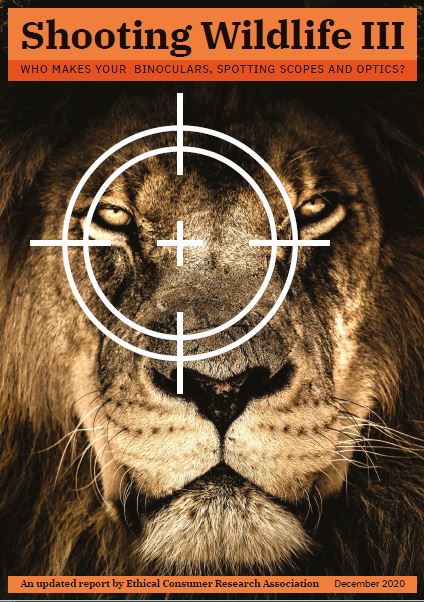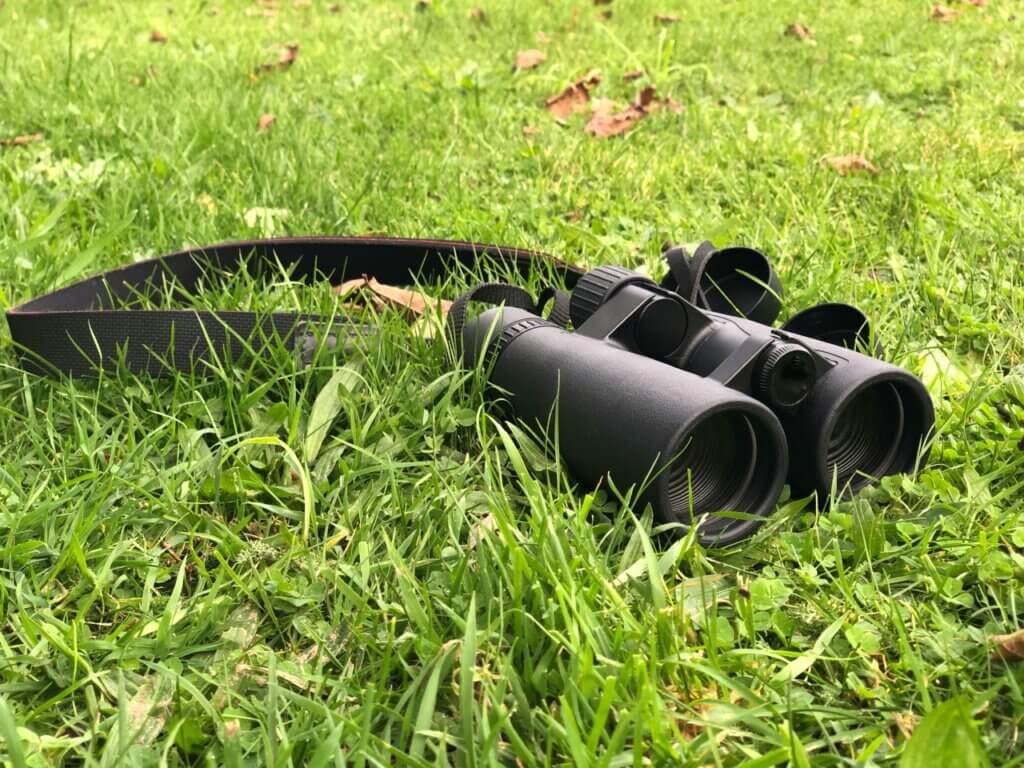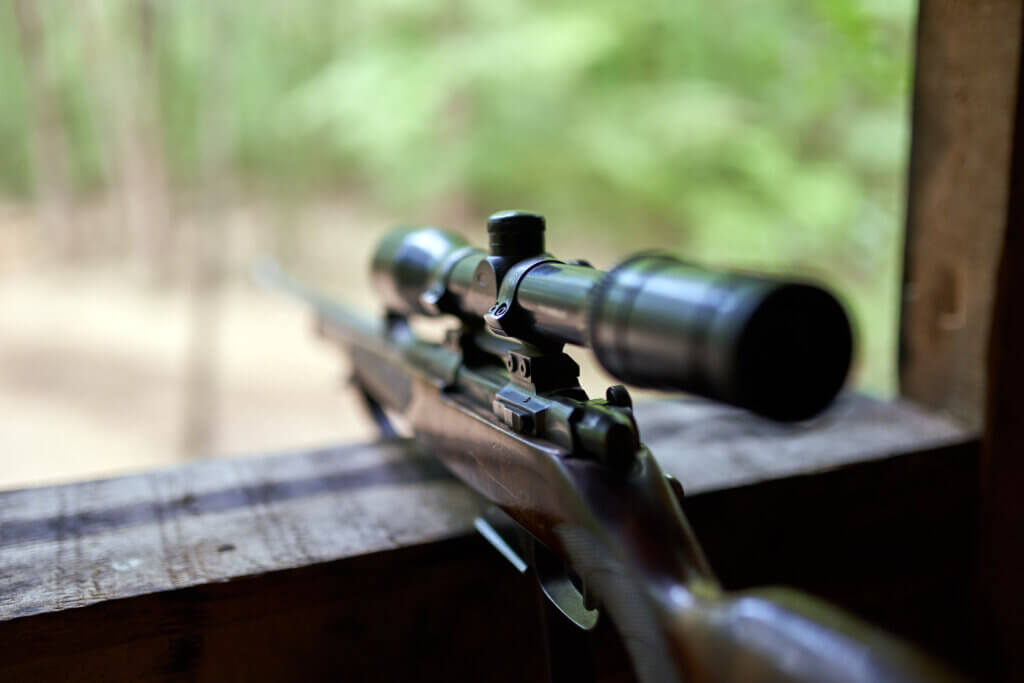
Anna Clayton is a writer, researcher and worker director at Ethical Consumer Research Association, and has co-written all three Shooting Wildlife Reports. Ethical Consumer is a member-led, independent co-operative that has over 25 years’ experience of ‘making ethics easy’ – specialising in consumer engagement and best practice in ethical markets. Twitter: @EC_magazine

Anna Clayton draws out key findings from Ethical Consumer’s Shooting Wildlife III report, published December 2020.
Ethical Consumer’s latest report explores the debates surrounding the ethics and impacts of sport hunting whilst updating the 2016 and 2018 Shooting Wildlife? reports, re-examining how 30 optics companies approach this sensitive subject. It also expands the scope of the first two reports to explore optics companies’ links with the military and their approaches to managing their own environment and climate impacts, in line with international agreements around climate change.
All 30 optics companies were contacted as part of this research. They were asked about current environment and climate policies and changes to company policy and practice since 2018 and the publication of the Shooting Wildlife? II report.

The key findings?
Optics companies seem to be feeling the pressure of increased public scrutiny since the publication of the last Shooting Wildlife? report. 75% of companies that still have strong links to hunting have removed some photos, website sections or text references to hunting from their marketing work, and the number of companies explicitly referencing ‘big-game’ or trophy hunting have fallen by 2% since the last report (from 43% (2016) to 40% (2018) to 38%).
This could be an important shift if built upon, considering scientific evidence that it is these kinds of hunting that pose the greatest risk to animal populations. However, for most companies these changes seem to be merely a change in marketing strategy and not a genuine move towards ‘wildlife friendly’ optics.
None of them had stopped marketing to hunters completely. Changes in companies’ marketing strategies and what appears to be the quiet withdrawal of three companies from the riflescopes business suggest that the industry feels there is less public support for its involvement in sports hunting. The question is whether these changes are a genuine move towards ‘wildlife-friendly’ optics brands, or if they are mostly a cosmetic exercise.

Military tensions
69% of the optics companies covered in the Shooting Wildlife III Report were found to supply optics or other imaging equipment to the military directly and/or market their optic products for military or tactical use.
Links were also found with the gun rights movement in the US. 28% of companies were found to have industry links with the National Rifle Association, while 10% were deeply embedded in the world of “hunting, shooting, public lands, the second amendment and good food”. One company was also found to use imagery related to militia and white supremacy in its marketing.
These ties raise some interesting ethical questions for 21st century wildlife watchers and conservationists – particularly considering the military’s complex and widespread environmental impacts on ecosystems and wildlife around the world, not to mention the millions of human deaths and human rights abuses experienced during wartime.
Catherine Lutz, a professor on war and its impacts at the Watson Institute for International Studies describes the inherent ‘ecocide’ of war in an article that explores the environment impacts of modern-day warfare: “in the military ‘the environment goes out the window even outside of war’ … The maintenance of standing armies just to counter the threat of war exerts enormous strain on environmental resources”[1].
This is perhaps best highlighted by the fact that the US Department of Defence is the world’s single largest consumer of oil and, as a result, one of the world’s top greenhouse gas emitters[2] [3]and contributors to climate change. In addition, armed conflicts have occurred in “more than two-thirds of the world’s biodiversity hotspots over the past six decades”[4] and, globally, military training areas are estimated to cover around 6% of the Earth’s surface – covering a range of diverse ecosystems[5].
Militaries around the world (and the companies that enable their work), therefore have a significant role to play in tackling the climate and ecological emergency.

Environmental impacts
Unfortunately, optics companies’ approaches to managing their own environmental and climate impacts often fall short of those required to meet the science-based targets agreed in Paris in 2015.
83% of companies reviewed in the Shooting Wildlife III report were considered to have poor environmental and carbon management and reporting, either because they had no sustainability reporting at all (52%) or because they reported in very general terms, without publishing environmental reduction targets and concrete plans to lower greenhouse gas emissions (31%).
Of the five companies with reasonable environment reporting, four were considered to have good carbon management and reporting and reasonable environmental reporting – publishing climate change mitigation strategies that were in line with international agreements such as the Paris Agreement. All four were Japanese electronics companies, and so it’s likely that they did well because of Japan’s mandatory greenhouse gas accounting and reporting system and its support for developing science-based decarbonisation targets.

Who to buy from
Buying second hand is always recommended from an environmental point of view.
If buying new, different ethical issues need to be weighed up.
Recommended companies to buy from are Canon, Olympus and Opticron as they could not be directly linked with the sport-hunting industry. However, of these companies, only Canon has good environment and climate reporting and all of them had links to the military. The other six companies with weaker links to sport hunting may also be a good choice: Celestron, Pentax, Kowa, Viking, Visionary, and Barr & Stroud. Of these companies, Pentax is the only company with reasonable environment and climate reporting. Viking, Visionary, and Barr & Stroud are the only companies without military links.
You can download the report here (see how your preferred brand stacks up on p15).
Visit the new Cruelty-free Optics website to find out more about the issues.
[1]www.theguardian.com/environment/2014/nov/06/whats-the-environmental-impact-of-modern-war
[2]watson.brown.edu/costsofwar/costs/social/environment (viewed 19 November 2020).
[3]watson.brown.edu/costsofwar/files/cow/imce/papers/Pentagon%20Fuel%20Use%2C%20Climate%20Change%20and%20the%20Costs%20of%20War%20 Revised%20November%202019%20Crawford.pdf
[4]Gaynor, K. M., Fiorella, K. J., Gregory, G. H., Kurz, D. J., Seto, K. L., Withey, L. S., & Brashares, J. S. (2016). War and wildlife: linking armed conflict to conservation. Frontiers in Ecology and the Environment, 14(10), 533-542. https://esajournals.onlinelibrary.wiley.com/doi/full/10.1002/fee.1433?saml_referrer
[5]Lawrence, M. J., Stemberger, H. L., Zolderdo, A. J., Struthers, D. P., & Cooke, S. J. (2015). The effects of modern war and military activities on biodiversity and the environment. Environmental Reviews, 23(4), 443-460
[registration_form]
Ethical lol. Every single conservation organisation in the UK seems to agree that deer need culling (ethically..again…lol). Every deer stalker will use binoculars for spotting and a telescopic scope to help aim a rifle as accurately as possible.
Personally I use Swarovski binoculars and have a Ziess scope on my rifle.
Richard B – so your argument is that as long as you can identify (rightly or wrongly) a single ethical use then there are no remaining ethical issues – that’s what you seem to be saying.
Personally, I’m not very convinced that ethical optics is a very strong advocacy route but your reaction is totally unconvincing.
Not sure that’s entirely fair, Mark. Its just that its a bit more complicated than asserting that all optics companies are bad but that Canon isn’t quite as bad as the rest.
I doubt that the wildlife watching market is large enough to sustain an optics company with no other customers given that the military market would dwarf it many times over. And for the same reason a boycott by wildlife enthusiasts would make zero difference to a massive international company.
Within shooting, the same company will make optics products, probably the same identical products, that can be used for both culling deer and shooting lions. You can argue about how they are marketed but I suggest there are far more relevant and powerful ways of expressing disgust at big game hunting.
I am reminded of a B&Q environmental policy I reviewed years ago [things will have changed a lot since then I’m sure]. I was surprised and impressed at the time. It went into great details about how it it was a major player in the timber market and set out really good policies on how it would ensure it sustainably sourced its timber. In contrast the section on iron and steel was very short. It said that the company had no influence whatsoever on how or where steel was produced because it was a trivial buyer on the global market. It would buy its iron and steel wherever they were cheapest.
[She has an excellent but separate point about assessing and minimising environmental impacts of production. No argument from me about that, but I suggest that stronger regulation and other governmental measures probably have more of a role here than direct consumer pressure. There’s a place for both, for sure. ]
Finally, and at the risk of being controversial, I would prefer our military to have the best optics available. Less chance of hitting the wrong target and more chance of surviving themselves. Like it or not we do have enemies out there, both state and non state actors. Wishing them away doesn’t make them go away.
“Not sure that’s entirely fair, Mark. Its just that its a bit more complicated than asserting that all optics companies are bad but that Canon isn’t quite as bad as the rest. ”
Assuming you were responding to Mark’s reply…
Mr. Avery did say….
“Personally, I’m not very convinced that ethical optics is a very strong advocacy route but your reaction is totally unconvincing.”
Really interesting blog. Issues here we all need to make our own decisions on, or choose to ignore. But we can’t plead ignorance. I can personally accept sales to military, but awareness of links to NRA and gun lobbying, together with decarbonisation efforts, are certainly likely to influence future purchasing choices I may make.
Mark, on the preview it looks like the paragraph spacing has gone again. it may just be because it is a preview, though this didn’t used to happen, but is there a problem somewhere?
Can you reference the scientific evidence that big game and trophy hunting “pose the greatest risk to animal populations?”. Clearly, which threats are most important will depend on which populations of which species we are talking about but I would have thought that as a generalisation there are a number of other things that represent significantly greater risks to animal populations.
There may be other ethical considerations involved with game shooting besides the impact on the viability of populations and I do think it is important that we should consider the ethical implications of our purchasing decisions but it is also important that such decisions are made on the basis of accurate information.
There are other issues to be considered here. Is the author also suggesting that the NHS / Universities / Pharma companies etc. should stop buying their optics / imaging systems from Zeiss / Leica and others because of hunting / military / climate change issues?
https://www.zeiss.com/microscopy/int/products/scanning-electron-microscopes.html
https://www.leica-microsystems.com/
These companies provide some of the best health imaging systems.
Personally I am also against most forms of hunting / shooting however if I could afford new binoculars I would be purchasing Zeiss or Leica.
I have yet to read this report but… Is it not important when talking about ‘hunting’ to make some qualifications? Personally, I am no lover of trophy hunting, not keen on driven shooting. But totally support personal for-the-pot taking of quarry by legal means. I also recognise that under controlled/legislated circumstances some species need culling. If these qualifications are not made then I am afraid the authors fall into the animal rights/total ban category and, for me, lose credibility. My rifle has optics and my binoculars are used for bird watching. Where do I fit in?
“But totally support personal for-the-pot taking of quarry by legal means.”
In the UK some species of bird which can be legally hunted/shot are in reducing numbers (snipe and woodcock, migratory species which cross national bounndaries like pintail, widgeon, teal). Some people take them legally (because that’s their legal right). Can you totally support that? An opposite of your “I also recognise that under controlled/legislated circumstances some species need culling.”?
If proven to be endangered the answer is to lobby government (post Brexit) to take them off the permitted quarry list. Of course that will not stop the continentals who may well carry on regardless taking them on passage. Being law abiding most of us will comply.
The point about this report is surely that as consumers we should have the information to make an informed choice. What we do with the information is up to us, but before these three reports were published it wasn’t available. It is now.